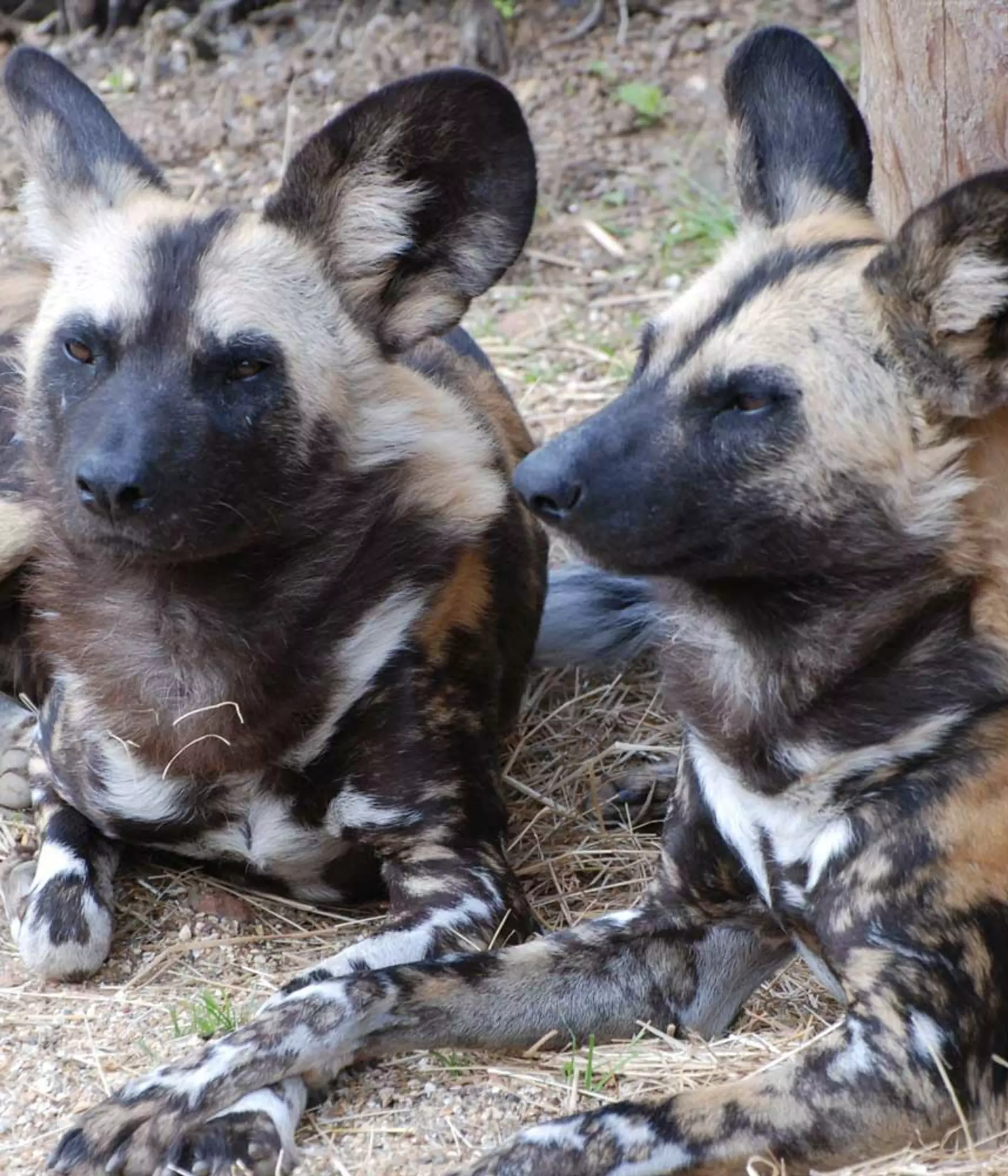Area of zoo
Pink zone
Enclosure status
Temporarily closed
Population in the wild
Decreasing
IUCN status
Endangered
Scientific name
Lycaon pictus
Order
Carnivora
Type
Mammals
Family
Canidae
Region
Sub-Saharan Africa
Habitat
Grassy plains, bushy savannah
We do not currently have African wild dogs at London Zoo.
What African wild dogs look like?
Each African wild dog has its own unique patterns and markings. In the wild, their distinctive patterning helps camouflage them from potential prey.
African wild dog facts
- Pack sizes range from four to 40 individuals, usually with more males than females.
- African wild dogs have highly developed communication skills and hunting is carefully planned with each dog having a role to play in ensuring the kill.
- They are known for being one of the most successful predators in the world.
- African hunting dogs have an 80% hunt success rate, whilst lions in comparison successfully catch their prey 30% of the time. This makes African hunting dogs one of the most successful predators on earth.
What do African wild dogs eat?
Mostly antelope and wildebeest but often warthogs, zebra and even lizards.
African wild dogs habitat
Grassy plains, bushy savannah.
Where do African wild dogs live?
Sub Sarahan Africa although virtually gone from West Africa.
What threats do African wild dogs face?
Human encroachment, diseases spread by domestic animals, and persecution by humans.
Our conservation work with African wild dogs
African wild dogs are an Endangered species so we're working at the cutting-edge of conservation to protect them on the ground in Africa.
London Zoo Newsletter
Get the latest updates about exciting animal news from the Zoos, upcoming events, experiences, offers
